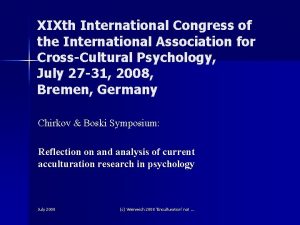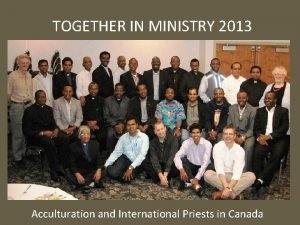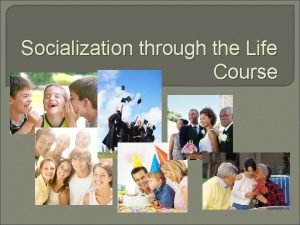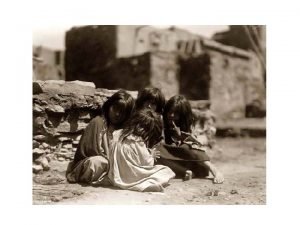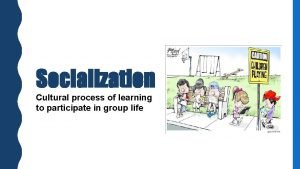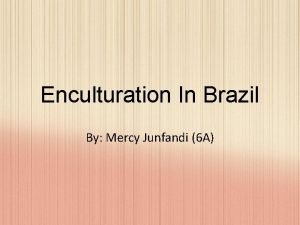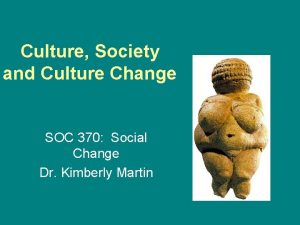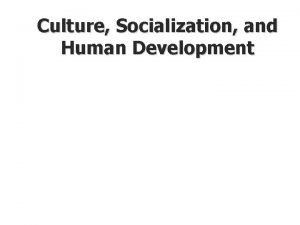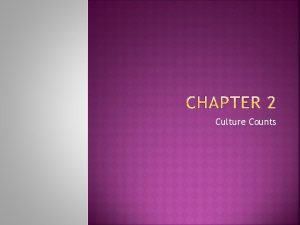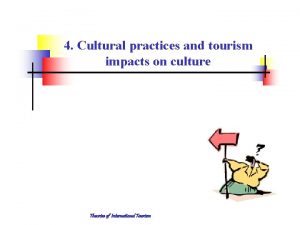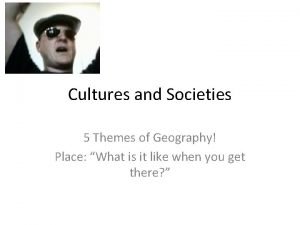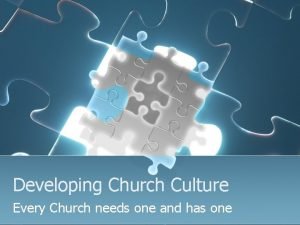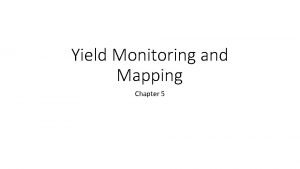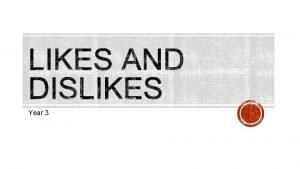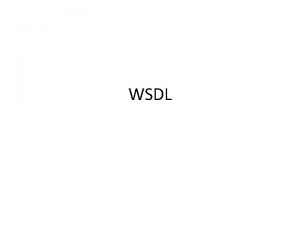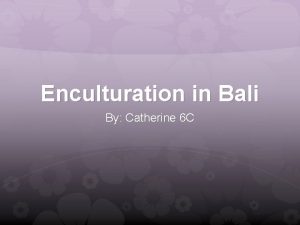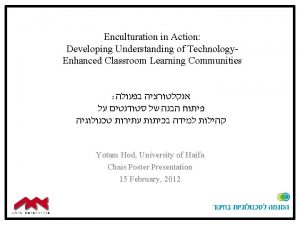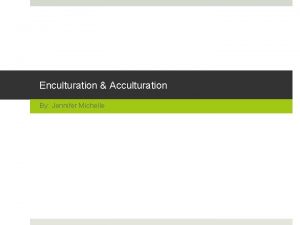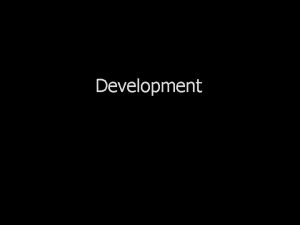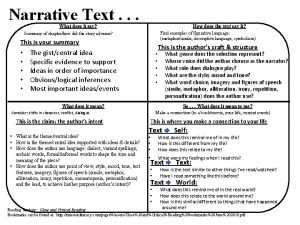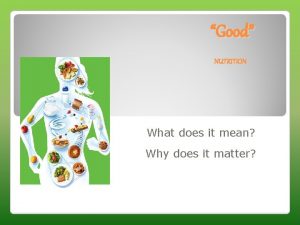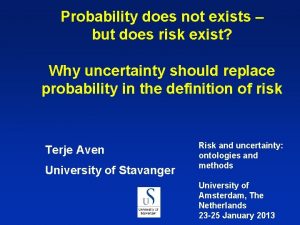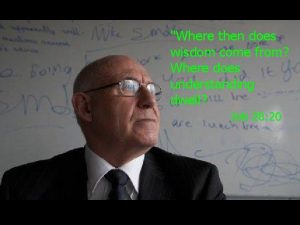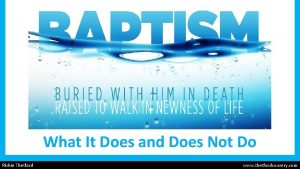Enculturation Enculturation What is enculturation How does enculturation






















- Slides: 22

Enculturation

Enculturation Ø What is enculturation? Ø How does enculturation influence personality? Ø Are different personalities characteristic of different cultures?

The Self and the Behavioral Environment Ø Culture is created and learned rather than biologically inherited. Ø All societies must ensure that culture is transmitted from one generation to the next. Ø Enculturation begins soon after birth.

Self Awareness Ø The ability to: Identify oneself as an object. l React to oneself. l Appraise or evaluate oneself. Ø Attaching positive value to the self ensures individuals act to their own advantage. l

Requirements for Selfawareness Ø Object orientation - aware of the world of objects other than self. Ø Spatial orientation - the ability to get from one object, or place, to another. 0

Requirements for Selfawareness Ø Temporal orientation - able to connect past actions with those in the present and future. Ø Normative orientation - understanding of cultural values, ideals, and standards.

Personality Ø Refers to the distinctive ways a person thinks, feels, and behaves. Ø Most anthropologists believe adult personality is shaped by early childhood experiences. Ø The economy helps structure the way children are raised and this influences their adult personalities.

Two Patterns of Child Rearing Ø Dependence training - promotes compliance in and favors keeping individuals within the group. Ø Independence training - emphasizes individual independence, self-reliance, and personal achievement.

National Character Studies Ø Focused on the modal characteristics of modern countries. Ø Many anthropologists believe national character theories are based on unscientific and overgeneralized data.

Culture Bound Syndromes Ø Ø Ø Windigo (Algonkian Indians of Canada and Northern United States) Amok (Malaya, Java & Philippines, Africa and Tierra Del Fuego) Susto Koro Kitsunetsuki (Japan) entire family resembles foxes. Ostracized. (Political control) Pibloktoq –Arctic Hysteria. Alaska, Canada Greenland Siberia and the Lapland’s. Ø Ø Ø Ø Latah Malay (snake and then echolalia with foul language and repetition) Anorexia, Bulimia PMS Munchausen and Munchausen by Proxy Magic Death (Australian Aborigines) Trance healing for sorceryinduced illnesses. Couvade (male pregnancy) reaction to stress.

Ethnic Psychoses And Other Culture-bound Syndromes Disorder Culture Description Amok Malaya (also in Java, Africa, and Tierra del Fuego) Sudden outbursts of aggression in which the afflicted person may kill or injure others. Western countries Disorder in which a preoccupation with thinness produces a refusal to eat. Anorexia nervosa

Ethnic Psychoses And Other Culture-bound Syndromes Disorder Pibloktoq and other Arctic hysterias Culture Description Circumpolar peoples Victim may tear clothes off, jump in from Lapland eastward water or fire, roll in snow, try to walk across Siberia, northern on the ceiling, throw things, thrash Alaska, and Canada to about, and “speak in tongues. ” Greenland

Ethnic Psychoses And Other Culture-bound Syndromes Disorder Culture Description Latah Malay Fear reaction in middle-aged women of low intelligence who are subservient. Southeast Asia Fear reaction in which the person fears his penis will withdraw into his abdomen and he will die. Koro

Ethnic Psychoses And Other Culture-bound Syndromes Disorder Windigo Kitsunetsuki Culture Algonquian Indians of Canada and northern U. S. Japan Description A hunter becomes convinced that he is bewitched. Victims believe they are possessed by foxes and change facial expressions to resemble foxes.

Ethnic Psychoses And Other Culture-bound Syndromes Disorder Couvade PMS Culture Description Western Europe Male Pregnancy Western countries Extreme discomfort and mood alterations associated with the menstrual cycle

Ethnic Psychoses And Other Culture-bound Syndromes Disorder Munchausen and Munchausen by Proxy Magic Death Culture Description Western Countries The need to be ill or make someone else ill for attention and validation. Australian Aborigines Fear that soul has been lost. Death is the end result.

The process by which culture is transmitted from one generation to the next is 1. 2. 3. 4. 5. enculturation. pluralism. adaptation. cultural relativism. subcultural variation.

An individual's personality 1. 2. 3. 4. 5. is a product of enculturation. is influenced by an individual's genetic makeup. is a kind of cognitive map functioning throughout an individual's lifetime. is an integrated, dynamic system of perceptual assemblages, which includes the self and its behavioral environment, that develops over time. All of the above.

Insanity, from an anthropological perspective, is 1. 2. 3. 4. 5. a term defining a biochemical disorder. a term describing the actions of people that deviate widely from the behavior of "normal" people. how "normal" people describe themselves. indefinable because of its complexity. not possible to compare crossculturally.

Dependence training is more likely in 1. 2. 3. 4. 5. nuclear families. societies whose subsistence is based on pastoralism. a food foraging society. extended families in societies whose economy is based on subsistence farming. industrial societies.

Today in Native American Societies the preferred term to describe an individual who falls between the categories of "man" and "woman" is known as 1. 2. 3. 4. 5. berdache. gay. passive homosexual. two-spirit. effeminate.

In Western countries a culture-bound psychological disorder known as ________ occurs most frequently among young women in which a preoccupation with thinness produces a refusal to eat. 1. 2. 3. 4. 5. pibloktoq amok anorexia nervosa bulumia latah
 Enculturation vs acculturation
Enculturation vs acculturation Acculturation enculturation
Acculturation enculturation Ages 30-49 in the life course are known as the
Ages 30-49 in the life course are known as the Enculturation synonym
Enculturation synonym The cultural process of learning to participate in a group
The cultural process of learning to participate in a group Enculturation example
Enculturation example Poem about socialization and enculturation
Poem about socialization and enculturation Enculturation vs acculturation
Enculturation vs acculturation Enculturation synonym
Enculturation synonym Enculturation example
Enculturation example Examples of enculturation
Examples of enculturation Difference of enculturation and socialization
Difference of enculturation and socialization Cultural drift
Cultural drift Venn diagram of diffusion and enculturation
Venn diagram of diffusion and enculturation Enculturation defintion
Enculturation defintion Enkulturasi adalah
Enkulturasi adalah Alesha dixon boy does nothing
Alesha dixon boy does nothing Yield monitoring definition
Yield monitoring definition She doesn't like pizza
She doesn't like pizza How big is 6 cm
How big is 6 cm What is wsdl
What is wsdl Whats a mini saga
Whats a mini saga Letter portfolio
Letter portfolio
